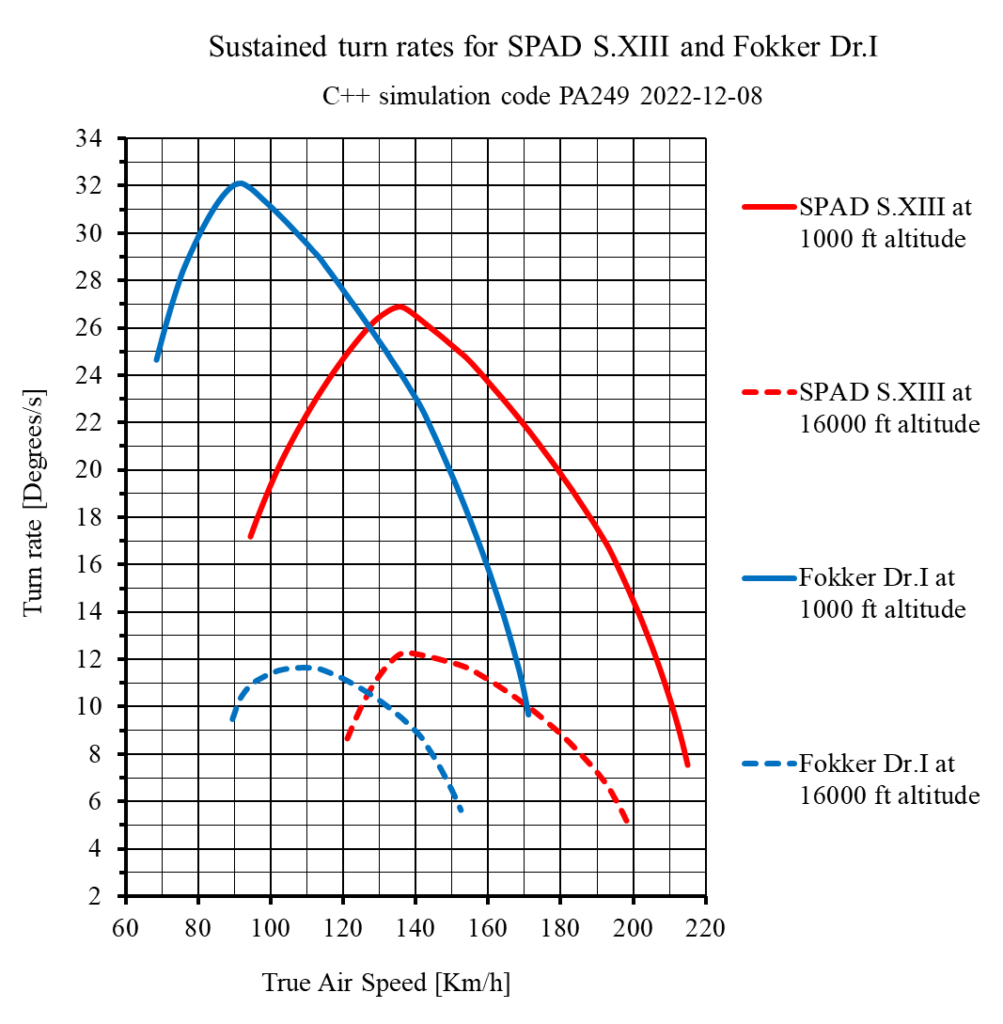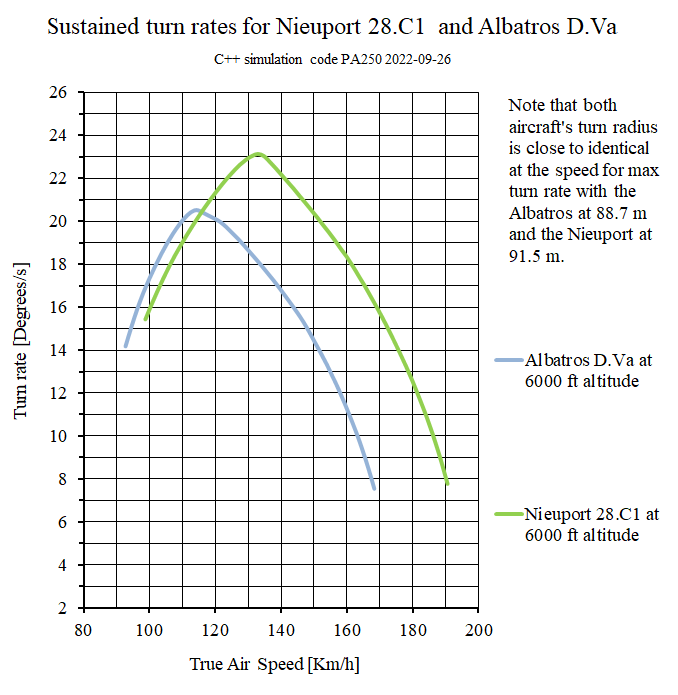Simulations covering WW1 era aircraft
As an example of the type of simulation results contained in the book WW1 aircraft performance and what they can reveal, below on the left is a figure with a turn performance comparison of two of the most iconic aircraft of WW1: The SPAD S.XIII and the Fokker Dr.I. This particular comparison looks at the aircraft’s maximum sustained¹ turn performance at low and high altitude assuming both aircraft at their normal take off weights. As expected, we can see that at 1000 ft altitude the Fokker is very much better than the SPAD and manages a turn rate of 32.1 degrees per second compared to the SPAD’s 26.9 deg/s. This is all well and good and also in line with what most people knowledgeable about aircraft performance would say: The SPAD was faster than the Fokker, but the Fokker was very much better in turns. However, what the simulations reveal and which comes as something of a surprise, is that the SPAD actually beats the Fokker at higher altitudes! Perhaps not by much in the given example, with the SPAD at 12.3 deg/s and the Fokker at 11.7 deg/s at 16000 ft altitude, but above this altitude and up to the aircrafts ceilings the SPAD definitely gains the upper hand, and the Fokker finds itself not only outmatched in speed and climb, but in turns as well. This is an important observation, since as the First World War progressed combat was initiated at ever higher altitudes, meaning that high altitude performance became more and more important.


That the SPAD’s turn performance actually supersedes the Fokker’s at higher altitudes goes against the grain of common knowledge and is something few people would guess. It certainly came as a surprise for me personally, since the Fokker at first glance seems to hold all the advantages: A modern thick wing profile in combination with a low wing loading and all those wings generating all that lift! But the Fokker actually has an Achilles heel: It suffers from a very inefficient wing configuration: The short stubby wings stacked on top of each other results in an enormous amount of drag in tight turns which hampers its performance. Why this is so requires a rather lengthy explanation and will therefore not be covered here but it is explained in detail in the book WW1 aircraft performance in a chapter especially dedicated to wing profiles and wing planforms. This comparison of the SPAD S.XIII’s and Fokker Dr.I’s turn performance is just an example, and the book contains many more simulation results, some of which may also at first glance seem counterintuitive: For example, that late war Entente scouts like the SPAD and S.E.5a were in fact much better turn fighters than they are generally credited with. And that the iconic Albatros D.Va (the Mercedes D.IIIa powered variant) on the other hand had basically no redeeming features at all, while the Nieuport 28.C1 seems to have been a very capable “jack of all trades” with quite good all-round, i.e. speed, climb and turn rate performance. For example, see the turn rate comparison above. In addition, note that the Nieuport not only has a markedly better turn rate, but that both aircraft’s turn radius is close to identical at the speed for max turn rate with the Albatros at 88.7 m and the Nieuport at 91.5 m.
The above are just some examples, and other aircraft who’s flight performance is simulated and analysed in detail in the book WW1 aircraft performance are the Fokker D.VIIF and D.VIII, Pfalz D.IIIa and D.VIII, Siemens Schukert D.IV, Sopwith Camel and Triplane.
Note 1: The maximum sustained turn rate is defined as the highest possible turn rate an aircraft can sustain without losing speed.